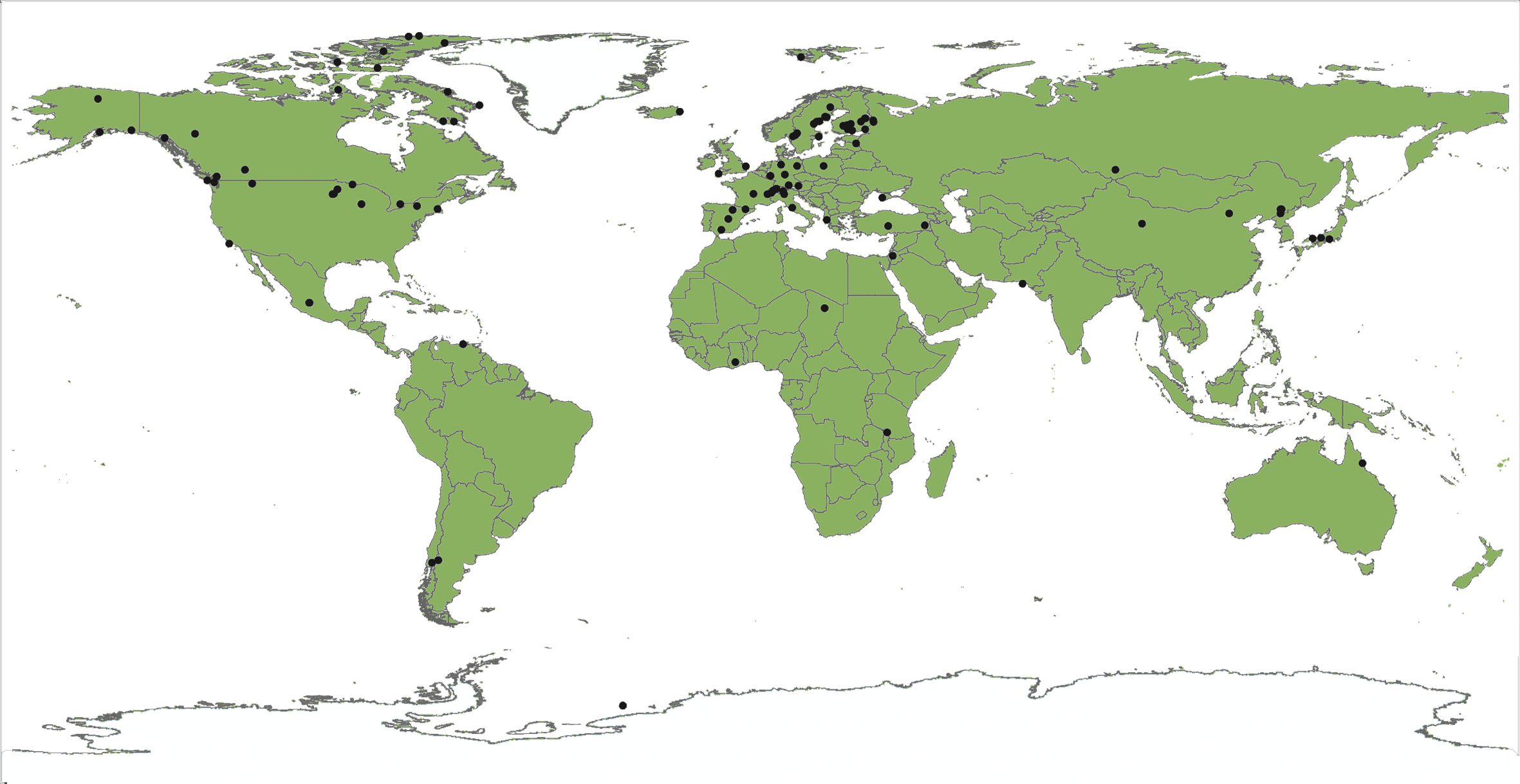- Home
- Publications
- PAGES Magazine
- Learning From Other Communities: Towards More Robust Varve Chronologies
Learning from other communities: Towards more robust varve chronologies
Mark Besonen, P. Francus, A.E.K. Ojala, R. Behl and B. Zolitschka
PAGES news
19(2)
88-89
2011
 |
Mark Besonen1, P. Francus2, A.E.K. Ojala3, R. Behl4 and B. Zolitschka5
1Texas A&M University-Corpus Christi, USA; mark.besonen tamucc.edu
tamucc.edu
2National Institute of Scientific Research, Québec, Canada
3Geological Survey of Finland, Espoo
4California State University, Long Beach, USA
5University of Bremen, Germany
2nd workshop of the PAGES Varves Working Group, Corpus Christi, USA, 17-19 March 2011
Varved sediment records, i.e., sediment records that accumulate in discrete annual to sub-annual increments, archive an extremely rich variety of paleo information either via their simple physical sedimentology, or from the chemical, isotopic or biological proxies they may contain. Despite this richness, these records are only sparsely used in regional and global climate reconstructions, which tend to favor other annually resolved records such as tree rings. Against this backdrop, and a decade long gap without any large meeting of the varve community, the PAGES Varves Working Group (VWG) was established in 2010. The VWG held a productive first workshop in Tallinn, Estonia in April 2010 that focused on reviewing methodological advances in varved sediment studies over the last decade (Francus et al., 2010; Ojala and Kosonen, 2010). In order to expand the reach of the VWG, recognition by INQUA was recently petitioned, and the VWG was granted project status as “INQUA Project Number 1102—VWG Project”.
A second workshop was held in March 2011 on the campus of Texas A&M University-Corpus Christi, USA. A scientific program and abstract volume is posted on the project’s website www.pages-igbp.org/workinggroups/varves-wg/. This second workshop focused on the development of more robust varve chronologies based on what could be learned from the communities that work with other non-sedimentary annually resolved climate archives. It was attended by 31 scientists from institutions in 10 different countries. Early career scientists, such as graduate students, post-docs and new faculty, accounted for nearly half of the participants (14 of the 31); thus, the workshop provided a great opportunity for knowledge transfer from more experienced varve researchers to young academics.
 |
|
Figure 1: Distribution map of published varved sedimentary records with chronology lengths of at least 100 years. Figure from Ojala et al., in preparation. |
The three-day workshop began with a review of sediment varve chronologies (a task that will form the basis of one of the deliverables of the VWG), specifically, an up-to-date metadatabase and inventory of published varved records (Fig. 1). This exercise allowed the group to better identify gaps in reporting methodologies used to establish age-models for varved records, and thus, areas for improvement.
Keynote addresses were delivered by experts from the tree ring, ice core, coral and speleothem communities. By learning from other communities tools and methodologies, the goal was to address perceived or actual weaknesses in varve chronologies and dating (Jansen et al., 2007), that may, in part, be responsible for the sparse usage of varved records in climate reconstructions. Each of the keynote addresses was followed by an active group discussion about how “best-practice” techniques in these adjacent fields could be applied and adapted to varved sediment records. Presentations by the participants were organized thematically and interspersed with the four keynote addresses.
Several plenary discussion sessions were undertaken on the last day of the workshop to address practical issues, such as how to structure the metadatabase of known varved records, and to provide recommendations for the publication of varved records including the publication of raw data, a full set of images of the entire record, and error estimates. Moreover, it was decided to implement a database of papers dealing with varved sediments, and a metadatabase of varved records on the PAGES website. It was also agreed to produce two group publications, one on protocols and a review about the fidelity of sediment varve chronologies.
A third workshop of the VWG will be held in the Eifel region of Germany, 21-23 March, 2012, focusing mainly on the calibration of varved records for climate reconstructions.
acknowledgements
The organizers wish to thank PAGES, INQUA, and the U.S. NSF (EAR-SGP and OCE-MGG Programs) for the generous financial support that made this workshop possible. Support by staff at Texas A&M University—Corpus Christi was also critical for the success of this workshop, and that support was greatly appreciated.
references
Jansen, E., et al., 2007: Palaeoclimate. In: Solomon, S., et al., (Eds.), Climate Change 2007: The Physical Science Basis. Contribution of Working Group I to the Fourth Assessment Report of the Intergovernmental Panel on Climate Change, Cambridge University Press, Cambridge, United Kingdom and New York, NY, USA.
Ojala, A.E.K. and Kosonen, E. (Eds.), 2010: Programme and Abstracts: First workshop of the PAGES Varves Working Group, April 7-9, 2010, Palmse, Estonia, 130 p
